(Click on any image for a larger view.)
On a cross-country road trip last June, my partner Sandra and I, fed up with convenience-store drinks and snacks, would seek out organic supermarkets or larger stores with healthy food sections to stock up for the next leg of the journey.
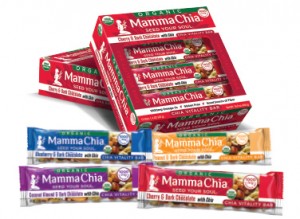
In one such store, Sandra noticed a vertical sliver of brilliant colors in the cold drinks cabinets, off to the side of the organic fruit juices and sodas. They were chia seed drinks—something that at the time we’d never heard of—from a company called Mamma Chia. Like everyone in the US who’s ever been to a drugstore, since about 1970, we were familiar with the name chia—but we thought of it as a plant used in a novelty toy.
Then, when we turned to the aisle with the nutrition bars, the same array of vivid colors, reminiscent of the stripes on indigenous Mesoamerican fabrics, jumped out at us from little squeeze packets of chia snacks from the same company. Sandra used her phone to look up chia seeds on the spot and found out that they are one of the most nutritionally dense foods known to humanity, incredibly rich in omega-3s and folic acid. She looked at the ranked packets, picked one up and held it—and her eyes filled with tears. For a minute or so she was too overcome to speak.
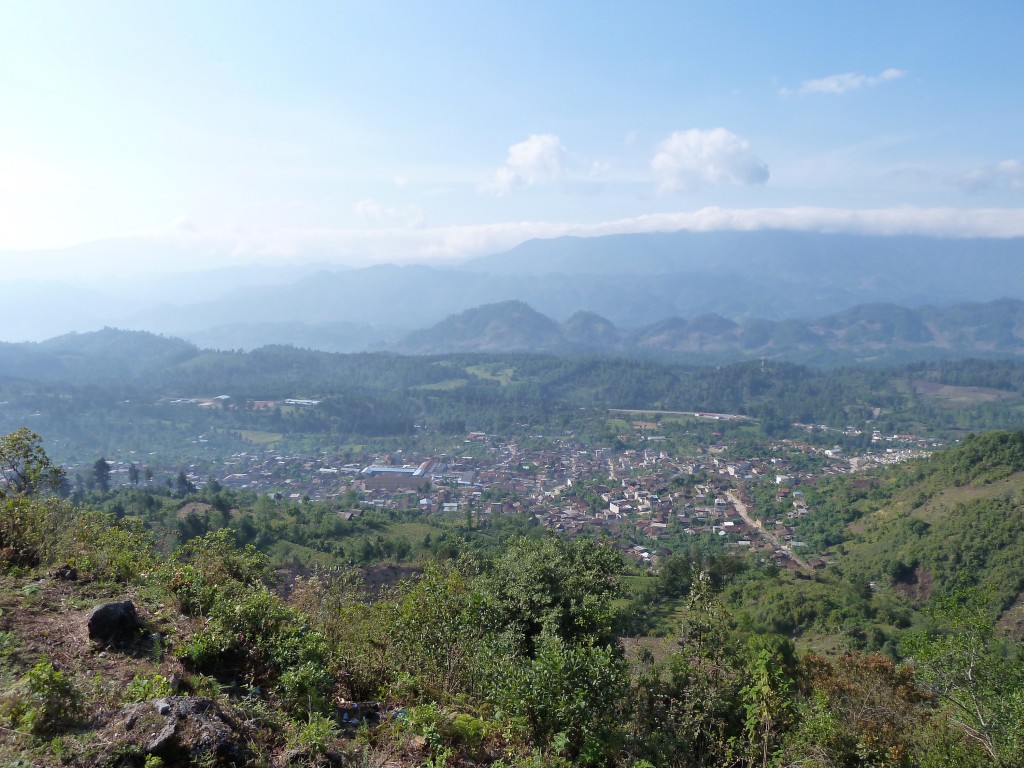
“Imagine, Adam,” she finally managed. “They could be squeezing that into their corn porridge.” It took me a second or two—Sandra will tell you that I have a wide turning radius mentally–but I got it. By “they” she meant our new friends in the Mayan town of Chajul in northwestern Guatemala. We had been chatting with one of those friends, Rigoberto, about his daughter Anna’s second birthday a few days earlier. There was no cake or ice cream. All Anna, Rigo, his wife, and the guests at the party had to eat was corn porridge—that’s ground corn and water, period—and bread. Rigo told us there wasn’t even enough for everyone. That corn porridge, a staple of the local diet along with tortillas, is described as “nutritionally deficient.”
Guatemala’s Maya: 22 Ethnic Groups
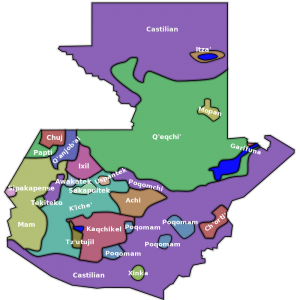
Guatemala is regularly referred to as the richest economy in Central America. A recent article in Bloomberg News praised its strong and well-managed central bank. But the riches are highly concentrated at the top. Roughly half of Guatemala’s population today consists of indigenous Maya people, most of them rural, comprising 22 different ethnic groups with their own languages and traditions. They have been marginalized, brutalized, discriminated against, oppressed, and dispossessed since the Spanish conquest four centuries ago.
In the 1960s and 1970s, the Maya, notably the Ixil people of the northwestern highlands, began to organize themselves into unions and cooperatives to fight for social and economic justice. When these were violently suppressed by the government, some younger Maya joined leftist guerrilla groups to resist. Then, between 1978 and 1996, a genocidal civil war was waged against not just the guerrillas but the entire Maya people by the Spanish-descended elite. During this period, known in Guatemala as la Violencia, over 100,000 Maya were killed and more than 200,000 had to flee their homes.
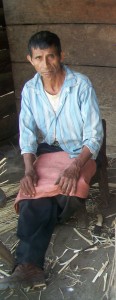 The genocide climaxed in 1982-83 under the dictatorship of General Efraín Ríos Montt, who in 2013 was convicted in a Guatemalan court of genocide for a campaign of deliberate mass slaughter against the Maya in general and the Ixil in particular. According to the 1994 report of the Guatemalan Human Rights Commission, between 70% and 90% of Maya Ixil villages were destroyed by the army, and the region’s economy and society has never recovered.
The genocide climaxed in 1982-83 under the dictatorship of General Efraín Ríos Montt, who in 2013 was convicted in a Guatemalan court of genocide for a campaign of deliberate mass slaughter against the Maya in general and the Ixil in particular. According to the 1994 report of the Guatemalan Human Rights Commission, between 70% and 90% of Maya Ixil villages were destroyed by the army, and the region’s economy and society has never recovered.
Because of this massive toll of death and displacement, much farming knowledge (as well as thousands of hectares of arable land that had been scorched) was lost. As a result, an estimated 80% of the region’s children under five—the figure is around 50% for the country as a whole—have chronic stunting malnutrition. Moreover, since government schools in the Maya areas were shut down for the three decades of the war, the majority of a generation has grown up illiterate as well as crippled by trauma and hunger. (To cite just one example, many rural Maya women are going blind in their fifties from long-term Vitamin A deficiency.)
Today, some Maya are able to attend university and become professionals—if their families or charitable organizations can find the money to pay for their primary and elementary schooling. But because the situation in the rural areas they mostly come from is so intractably dire, these areas are suffering from a brain drain of educated young people, who in many cases shed their Mayan identity and get jobs in the cities rather than returning to help their communities.
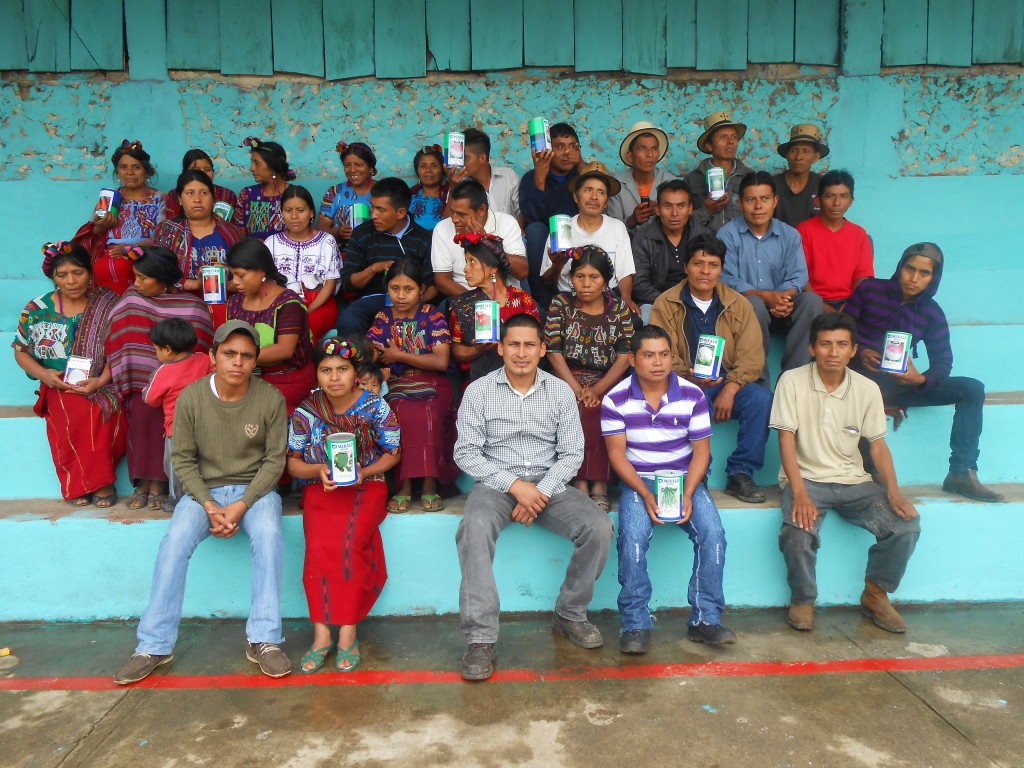
In 2011, four young graduates from Chajul—one of them our friend Rigoberto Gallego—bucked this trend. Elected by an assembly of about 70 other locals, they became the officers of a new organization called La Asociación de Campesinos para el Desarrollo Maya Ixil, ASOIxil for short: the Farmers’ Association for Maya Ixil Development.
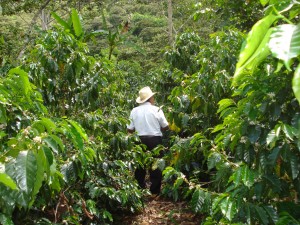
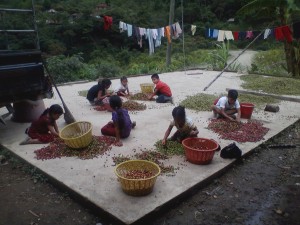
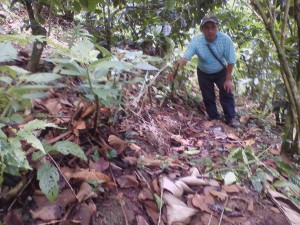
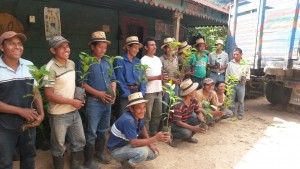
Their goals were to combat hunger, create economic opportunity and employment, and in general to support the development of the region. Another goal is the preservation of their traditional culture. As Maya people, to whom the earth is sacred and farming a spiritual activity, they pledged to do this by developing and cultivating high-quality organic crops, treating land and water with due reverence.
Today, four years later, ASOIxil is a legally registered Guatemalan non-profit association of 92 small-plot farmers in seven villages and around the county seat of Chajul. The association also includes a group of women weavers creating traditional Maya fabrics and other handicrafts.
The farmers and weavers work to earn revenue through selling their products. They are primarily supported by Bright Star Philanthropy Partners, through projects in cooperation with Seed Programs International and other Bright Star donors for revenue and technical help.
The biggest threat to coffee production, however, is the roya (rust) fungus, which renders the beans unusable. Small coffee farmers scrape a living from their trees and even in a good year may be at bare subsistence level for three months out of it.
When rust attacks their trees, the trees are weakened, the following year’s crop is diminished or nonexistent, and the farmers face privation.
Climate change is also increasing rust infection to the point at which 80% of the trees in the area are infected to some degree—the oldest (at the age of 30 or so) have to be uprooted because the fungus is killing them. And even when the farmers can obtain new young trees to plant, these take 3–5 years to bear usable fruit.
There’s a lot of pressure on these farmers to sell their land to big commercial growers. The desperate farmers take offers that look big to them but are far below what the land is worth—and when the money is spent, they have no livelihood.
The solution being attempted in multiple places throughout Guatemala is for poor farm families to grow their own food again as they were doing before la Violencia, so that they can have adequate nutrition even when they have no money to spend at the market. Then, if they grow a surplus, they can sell it at the market themselves.
Redeveloping this agrodiversity, as it’s called, typically takes the form of providing rural Maya with vegetable seeds—cabbage, squash, tomatoes, chard, onion, and local plants like macuy, a spinach-like leafy green. (For an excellent and detailed article about one such program, see “Challenges to Agrodiversity in Poptun, Guatemala” by GoodFood World contributor Laura Zera.)
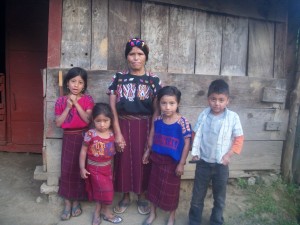
With the help of Seed Programs International, ASOIxil has been running a small vegetable garden program with 35 gardens for families with malnourished children and another 50 gardens for elderly people, widows, and abandoned mothers (because of the armed conflict, there are a lot of both).
Now ASOIxil is beginning a new program of 320 huertos familiares (family vegetable gardens) that targets the farmers worst hit by rust. Many of the gardens will be on parts of their land that have been cleared of dead coffee trees.
Participant families (200 of whom will pay something towards costs) will also receive egg-laying chickens and a piglet that will provide organic fertilizer, otherwise relatively costly, in the form of manure. Meanwhile, volunteer experts are advising the coffee farmers on organic cultivation methods.
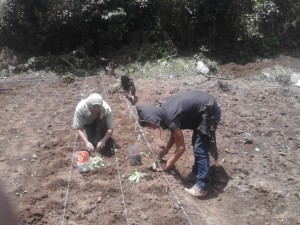
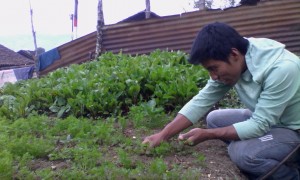 Planting and growing in family gardens.
Planting and growing in family gardens.
Good as these projects are, and rapidly as the organization is growing, ASOIxil needs to bring in more money even to get the resources they need to process and market their crops for export. To do that better, ASOIxil and other Maya organizations will have to publicize the realities of their lives and express their needs and desires from their own point of view.
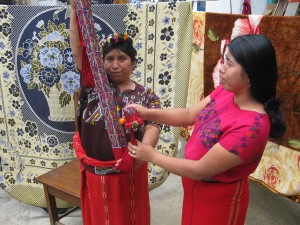
The good news is that it looks as though the world is ready to embrace the earth-centered philosophy and the vibrant colors and rhythms of Maya culture—and the web makes it easier than ever before to make them known everywhere.
And here’s the kicker. Sandra’s intuitive likening of Mamma Chia’s packaging to Mayan fabrics was profoundly accurate. That’s because chia actually originates in what is now southern Mexico and Guatemala—the province of Chiapas, which to this day has a majority Maya population, is named for chia, which was grown throughout the region by the Mayan and Aztec empires. (Chia’s name is supposedly derived from the ancient Nahuatl word for “strength.”)
Historically, building an urban civilization of any size has always faced the problem of agricultural productivity. Urban laborers, craftspeople, merchants, priests, rulers, and their children do not grow their own food, which means that the farmers must produce enough to feed them as well as themselves.
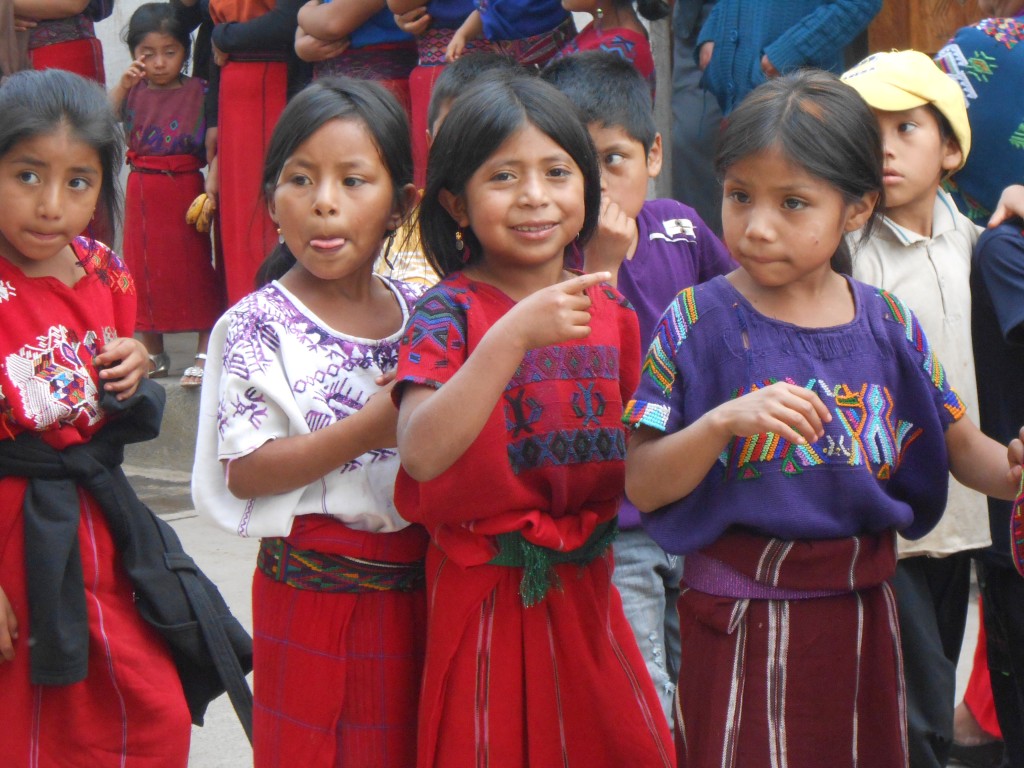
Chia seeds are the most nutritionally dense food on the planet, rich in B vitamins, proteins, and soluble fiber. Skilled agriculturalists though the ancient Mayans and Aztecs were, there’s a growing consensus that they could not have built and maintained their cities and their pyramids without chia seeds grown by their farmers as a central part of their diet.
Yet today, astonishingly, little or no chia is cultivated in Mexico or Guatemala. According to several accounts, that’s because the Spanish conquerors recognized the central importance of chia to the Mayans and Aztecs as both a sacred plant and a strength-giving source of nutrition, and did their evidently successful best to stamp out its cultivation and consumption. Can chia make a comeback to its place of origin?
Recently I spoke with Henry Caba, Vice-President and Agricultural Director of ASOIxil, about chia. He told me that he learned about chia in Mazatenango, participating in a conference organized by Semilla Nueva (New Seed). Semilla Nueva a US-based NGO that is working with Guatemalan farmers to help restore degraded soils and increase yields by introducing hardier and more nutrient-rich varieties of established crops (like corn) and crops new to the region (like pigeonpeas, a highly nutritious bean).
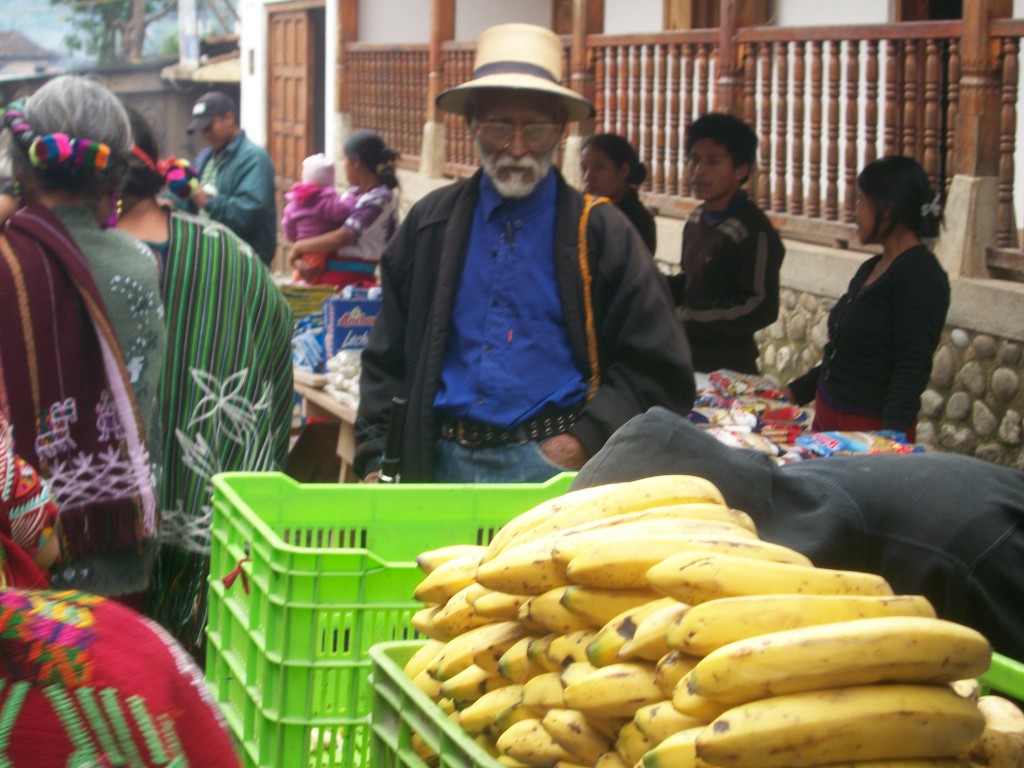
Henry told me that, as I had heard from other sources, chia is not being grown anywhere in the Ixil triangle, because it remains unknown as a crop there: “Nebaj, Chajul, and Cotzal (the three main towns and surrounding “counties” of the Triangle, for which it is so named)—it’s not known in any of those places. But it’s a good crop and could easily adapt to the warm climate in all of them.” He commented: “Yes, I believe it’s a great crop, but we would also need to train people how to cultivate it—not just how to plant it but how to consume and prepare it.” He laughed and added: “I won’t lie to you, Adam—if I brought my mother some chia seeds right now and asked her to prepare them, she’d tell me to take them back and leave them where I got them from.”
For the moment, then, ASOIxil’s nutritional efforts are very much focused on restoring the ancient Maya tradition of family food gardens and teaching people how to cultivate plants they’re already familiar with. If and when ASOIxil decides to reintroduce chia, spreading the word will require not only the painstaking face-to-face work of education and training funded by NGOs like Seed Programs International, but wider popularization by media campaigns of the kind that Communications Director Rigoberto Gallego is learning to create.
The conquistadores virtually erased chia from Mayan cultural awareness as part of their campaign to subjugate the Mesoamerican peoples to Church and King. But today, even as ordinary Guatemalans are engaged in a massive ongoing popular campaign to throw off the rule of a corrupt and brutal elite, chia may be ripe for rediscovery.
(All on-site photos: Adam Cornford)
About Adam Cornford
 I’m a reader and writer to the bone. With a little help from my mother, I taught myself to read when I was four and a half. By a year later I was writing and illustrating my own stories. I’ve been reading voraciously—literature, history, science and technology, economics, and anything and everything else—ever since.
I’m a reader and writer to the bone. With a little help from my mother, I taught myself to read when I was four and a half. By a year later I was writing and illustrating my own stories. I’ve been reading voraciously—literature, history, science and technology, economics, and anything and everything else—ever since.
And I’ve written pretty much anything and everything, too, though most of what’s currently published under my name is poetry: feature journalism, marketing collateral, grant proposals, business and project development plans, technical papers, textbooks, comic-book scripts, and latterly all sorts of web content. If writing were an ocean, I’d be a fish.
I’m also a veteran teacher and explainer. I stumbled into teaching thirty-odd years ago fresh out of grad school, as a tutor and counselor to at-risk youth in San Francisco’s Mission district.
To learn more, visit Adam’s website, Precision English.

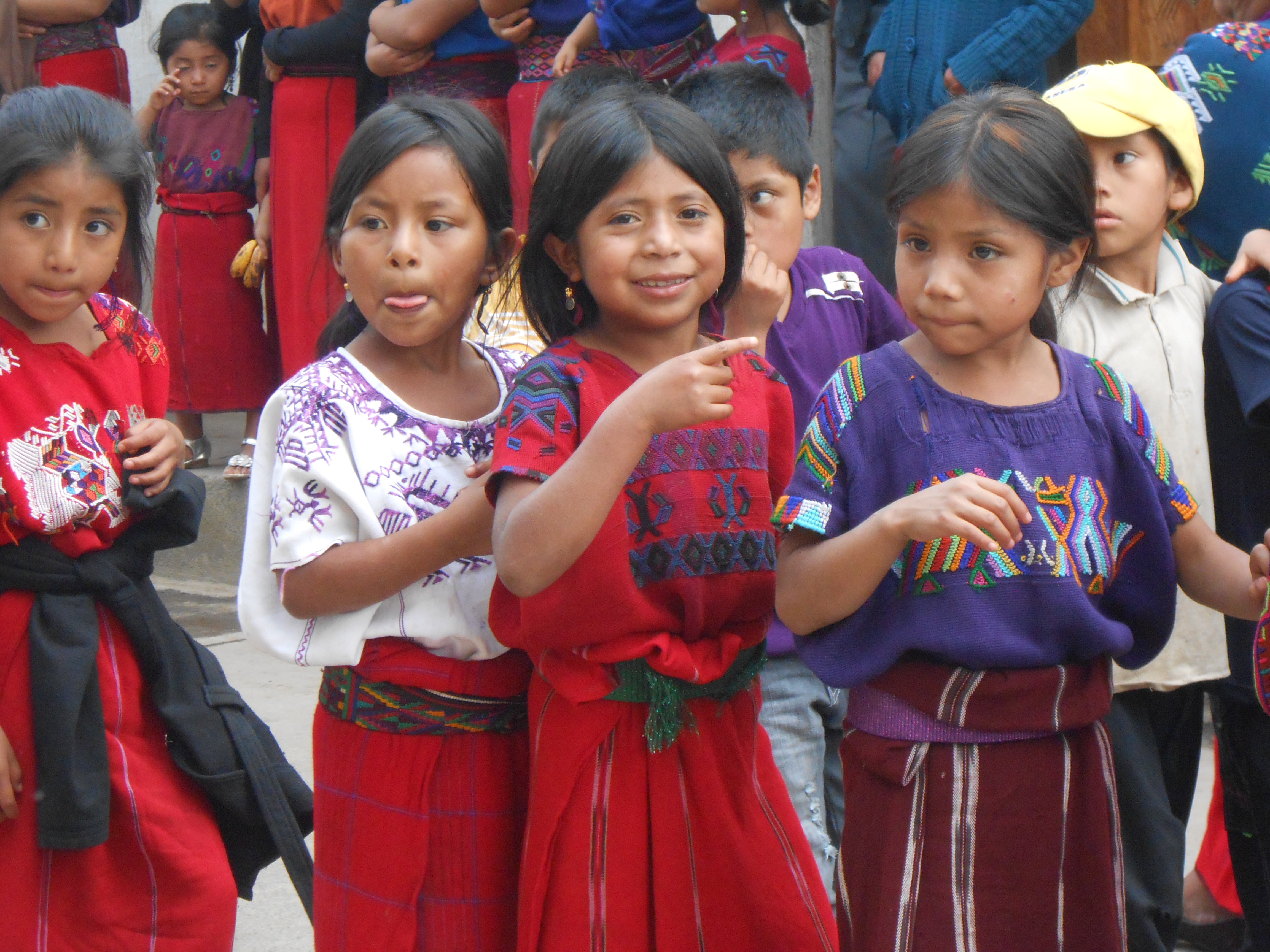
What an informative read, Adam. As a film teacher and scholar, I only just viewed “The Mission,” a film directed by Roland Jaffe, twelve hours ago. I knew little about South America and European colinization,except for my graduate thesis on Frida Kahlo,where I was exposed to the horrors and the contiguous realities for the Meztista women. Thank you and Sandra for bringing light to darkness.
This is such an informative and well-written piece. Your recognition of the difficulties of adopting something new (even something that originated in that region) is important, as we in the West too often think that these issues should be quickly fixed, but there’s much more to it than just handing out some seeds for a new crop. Thank you, Adam, and GFW for publishing this article.